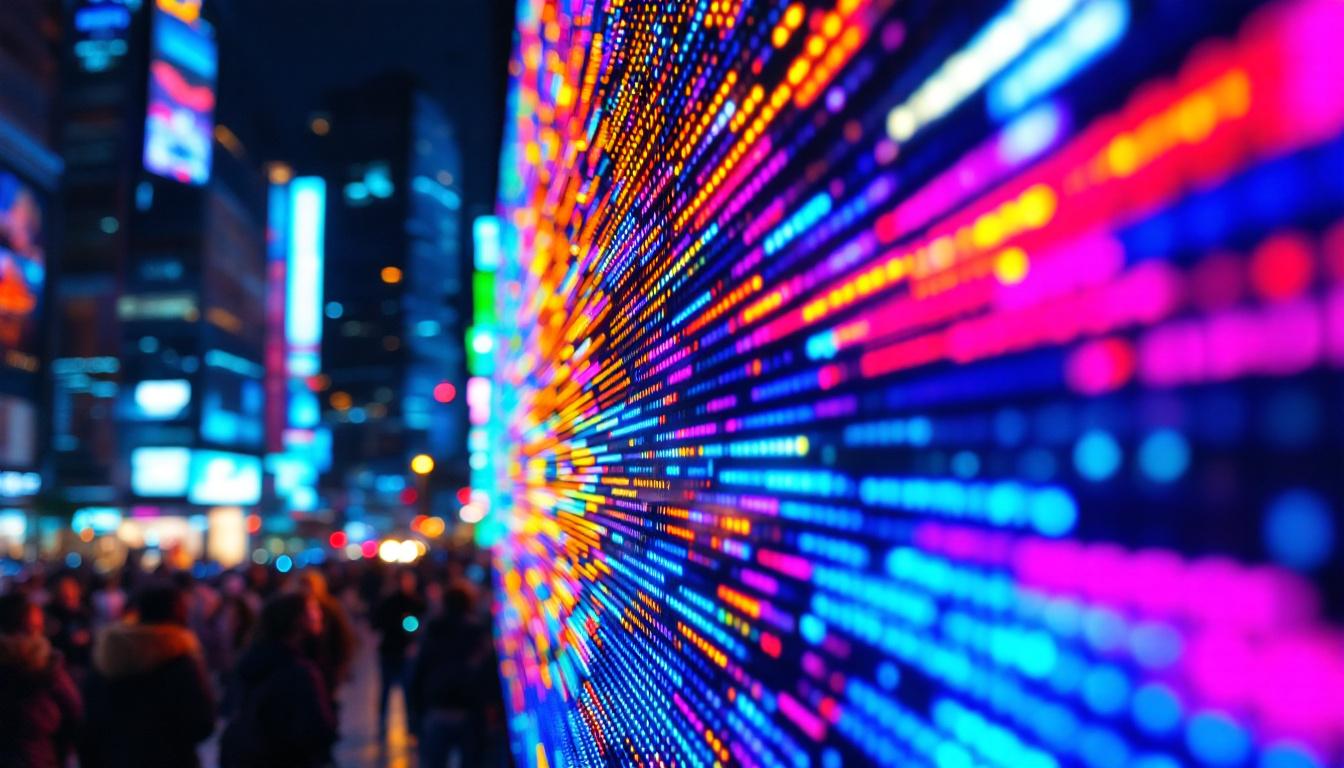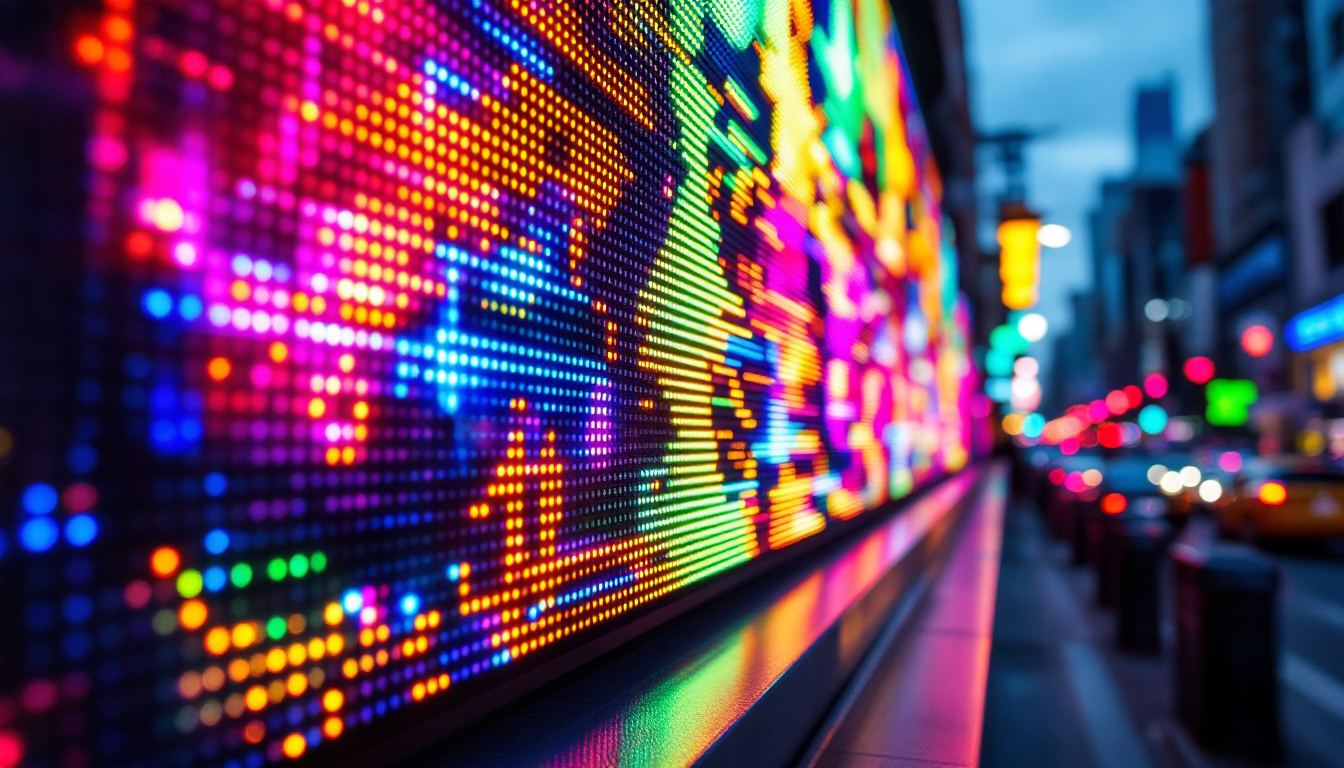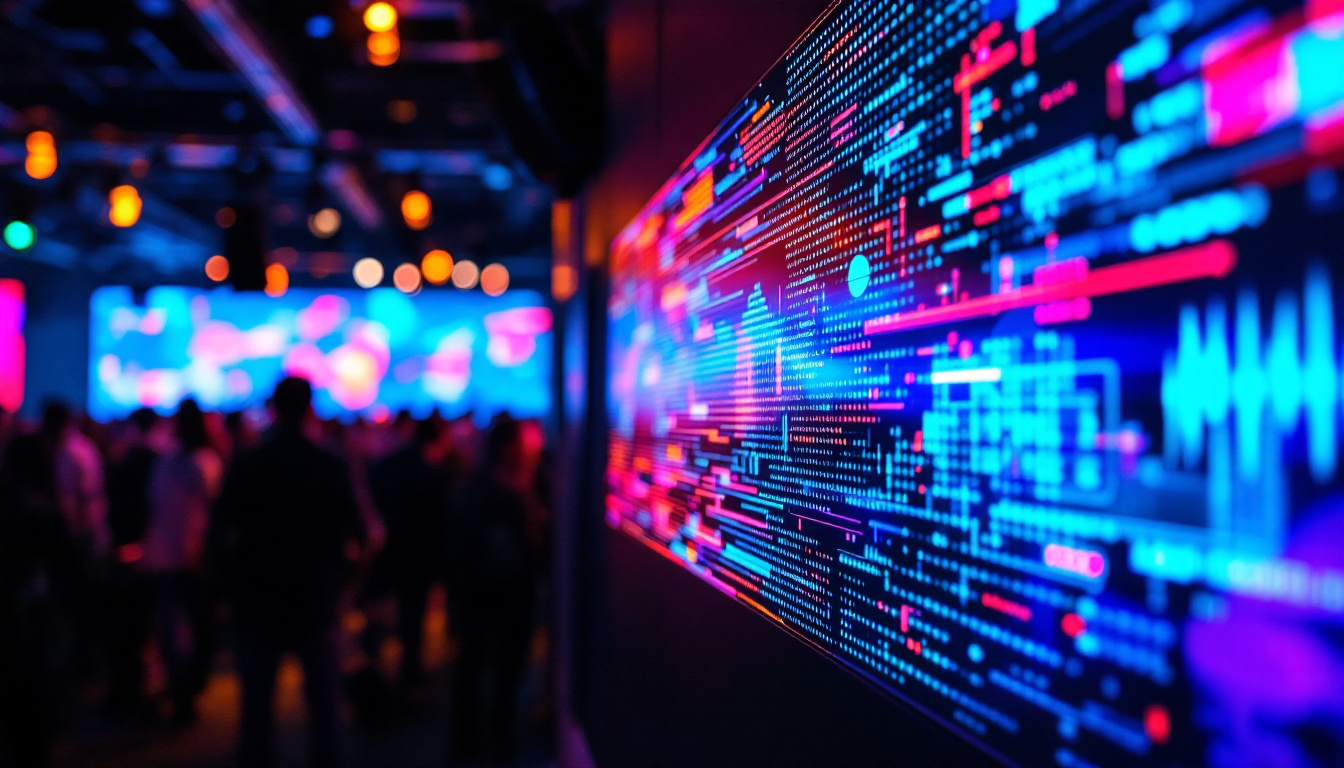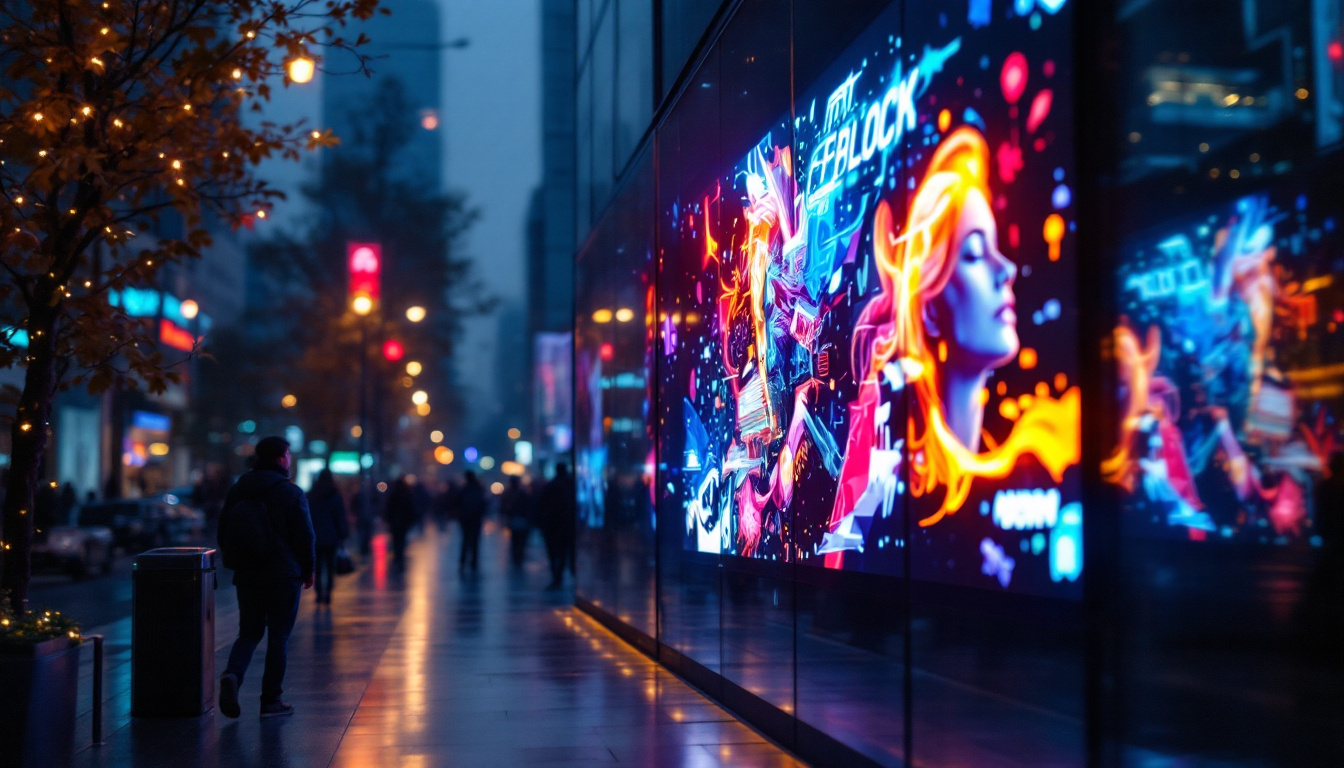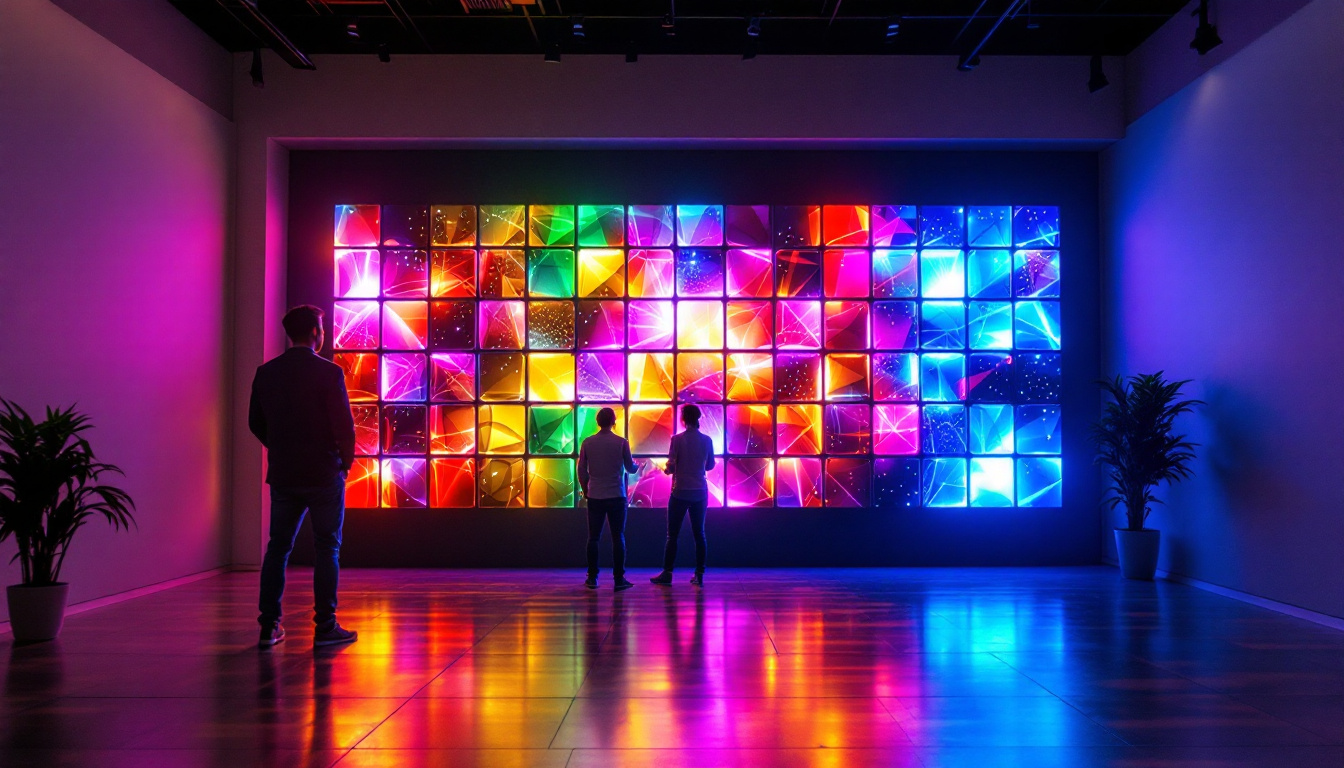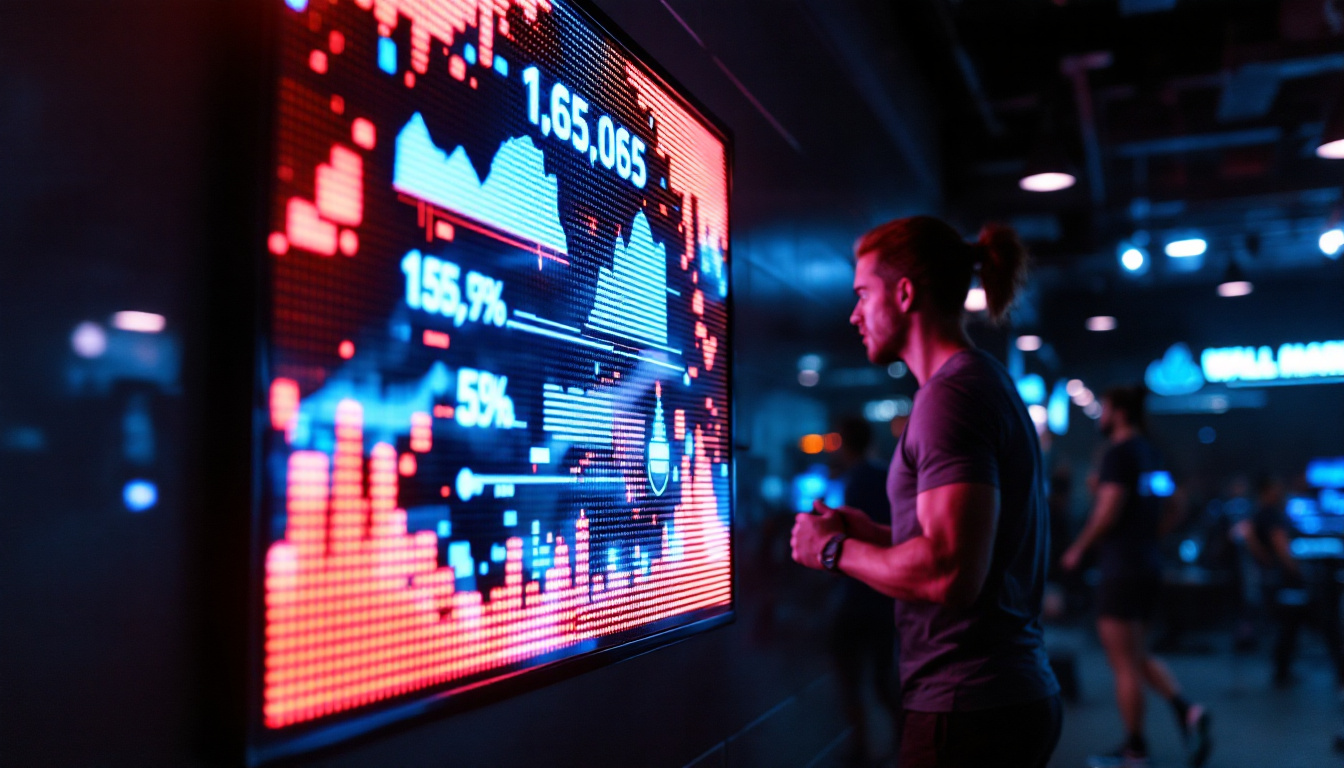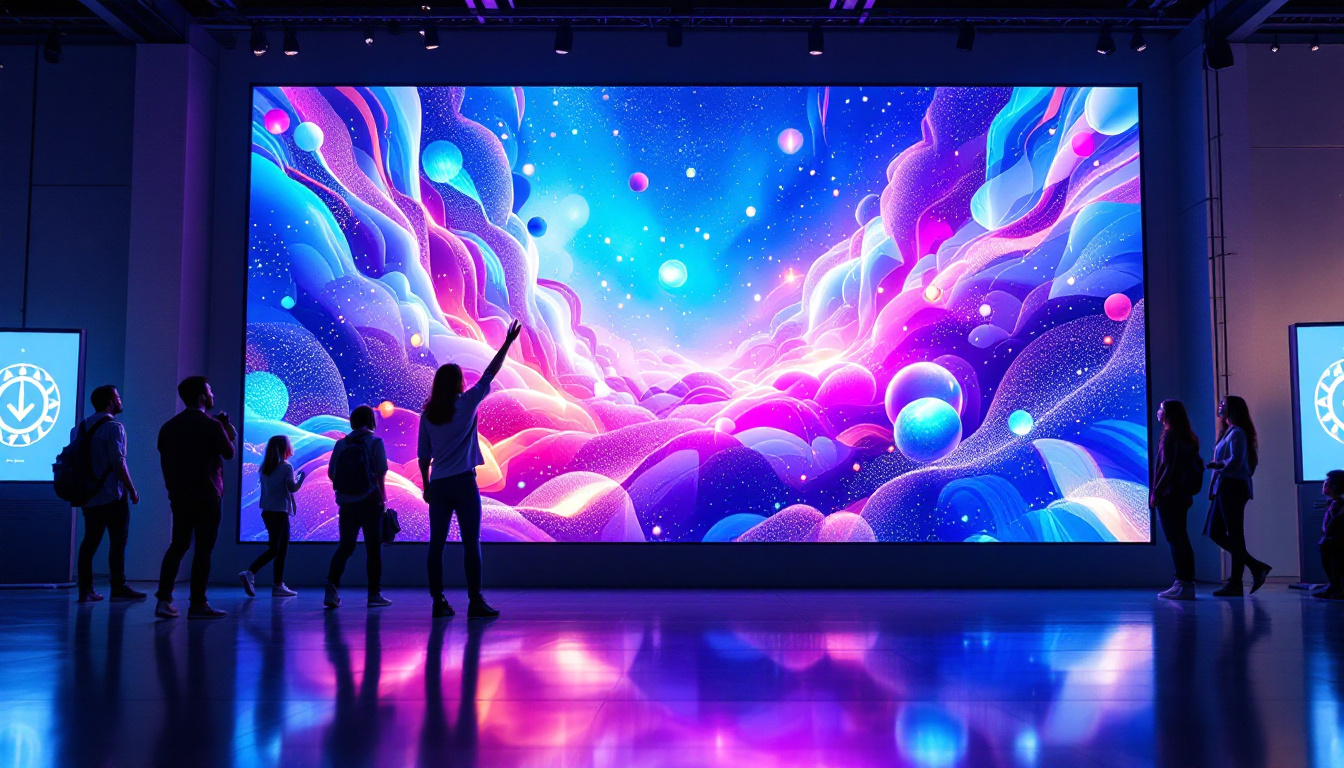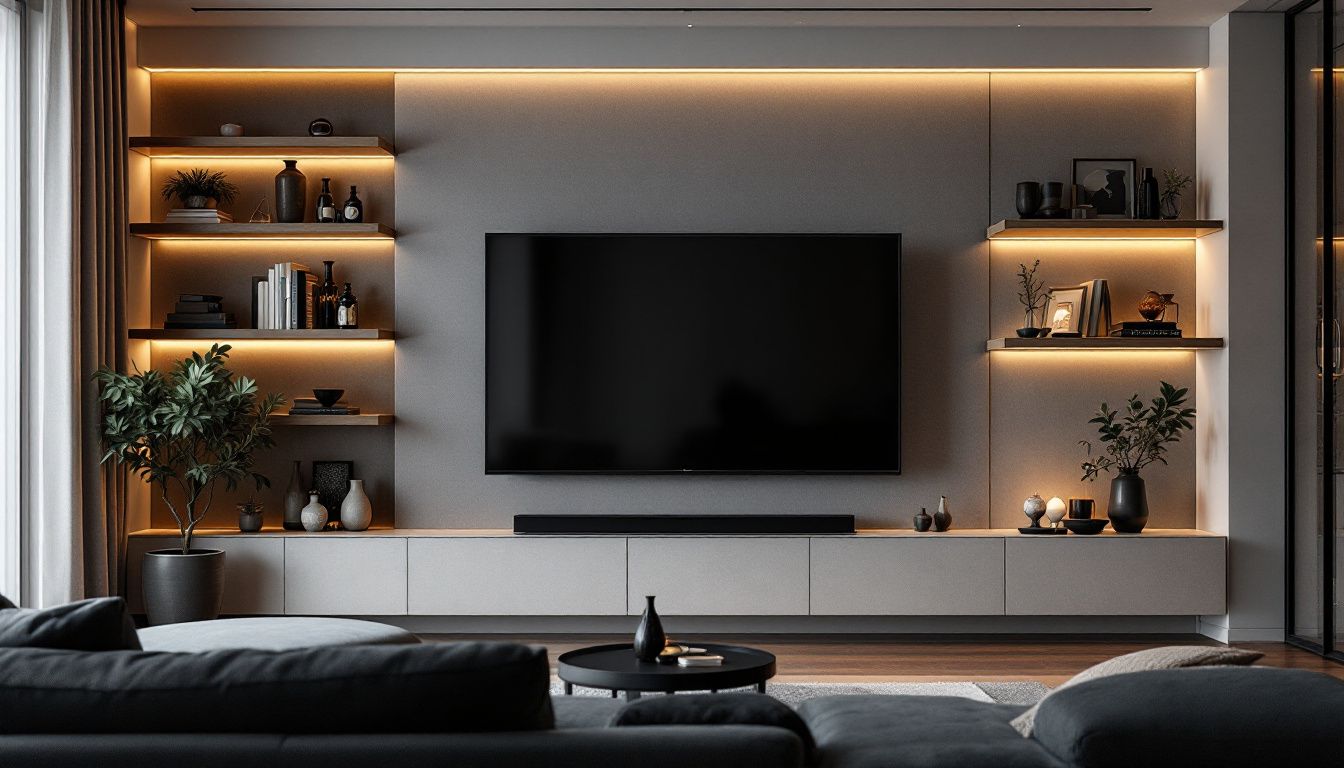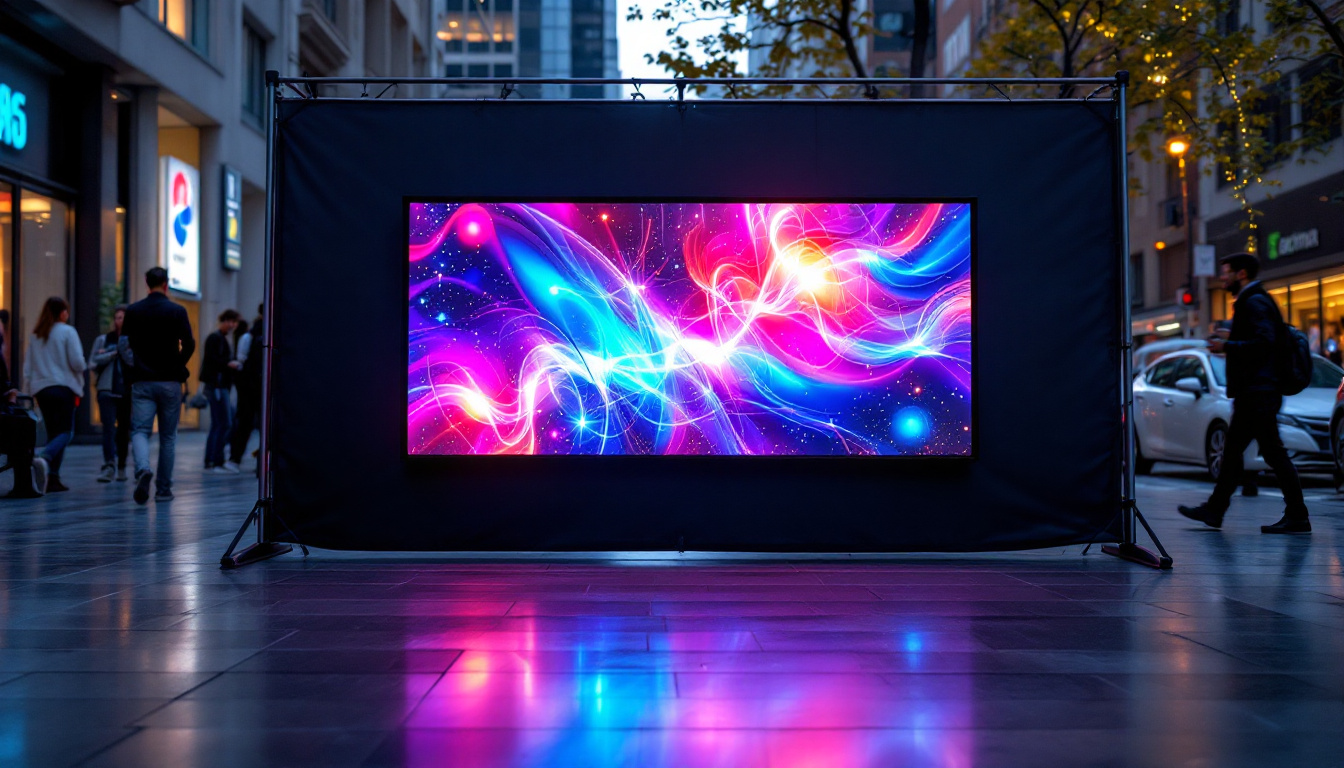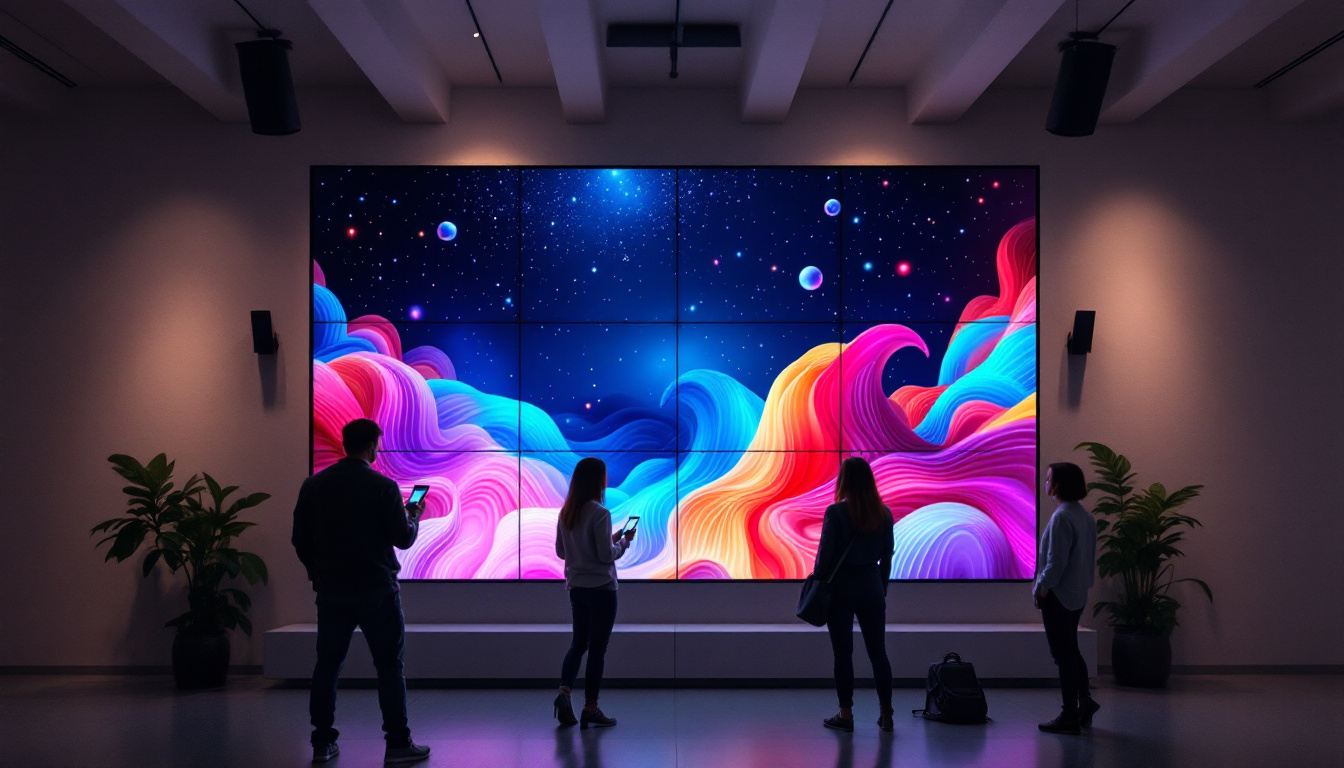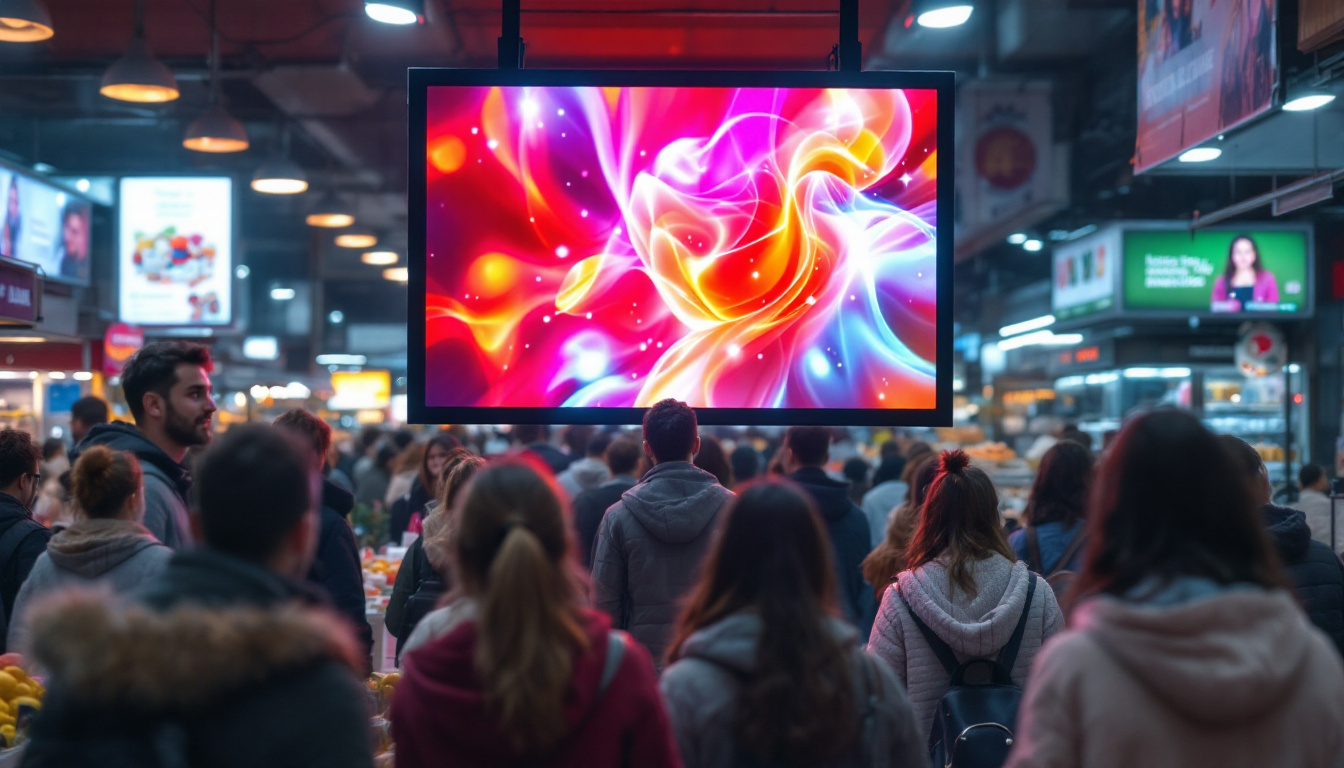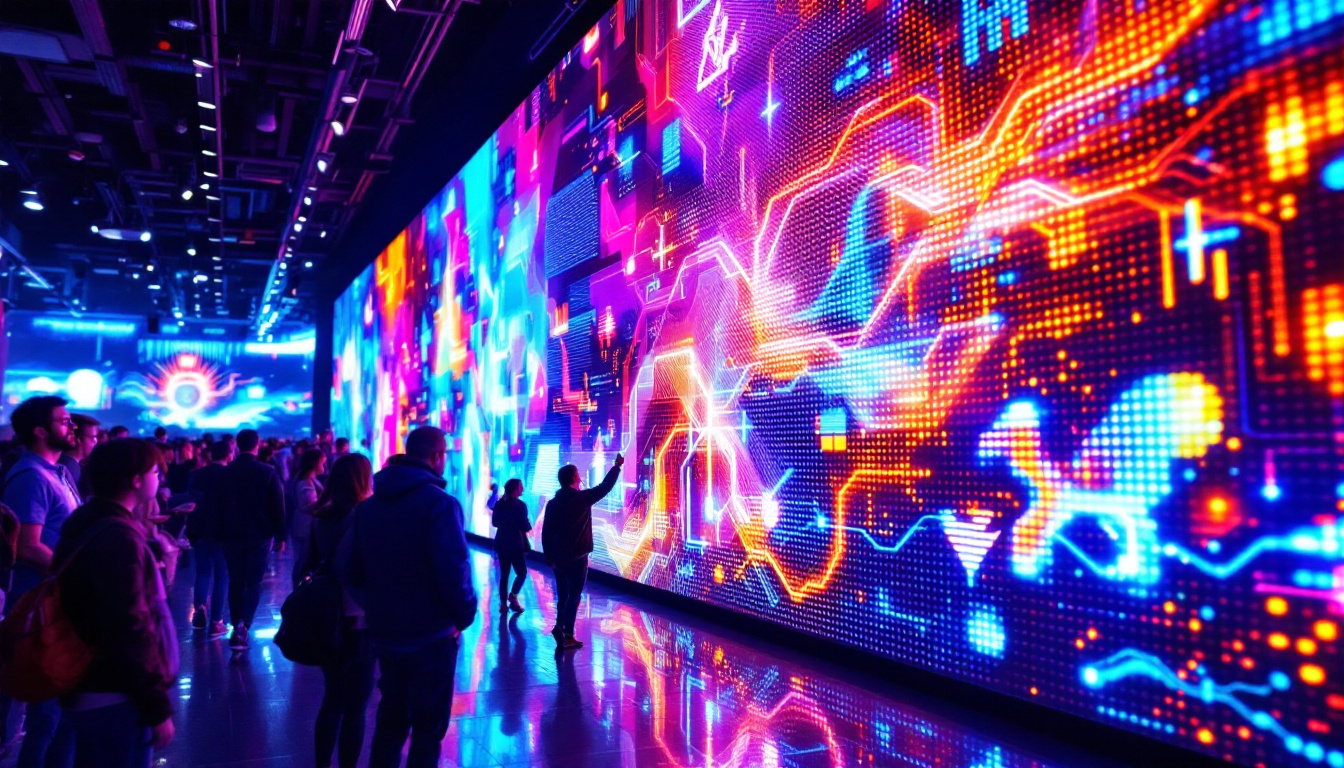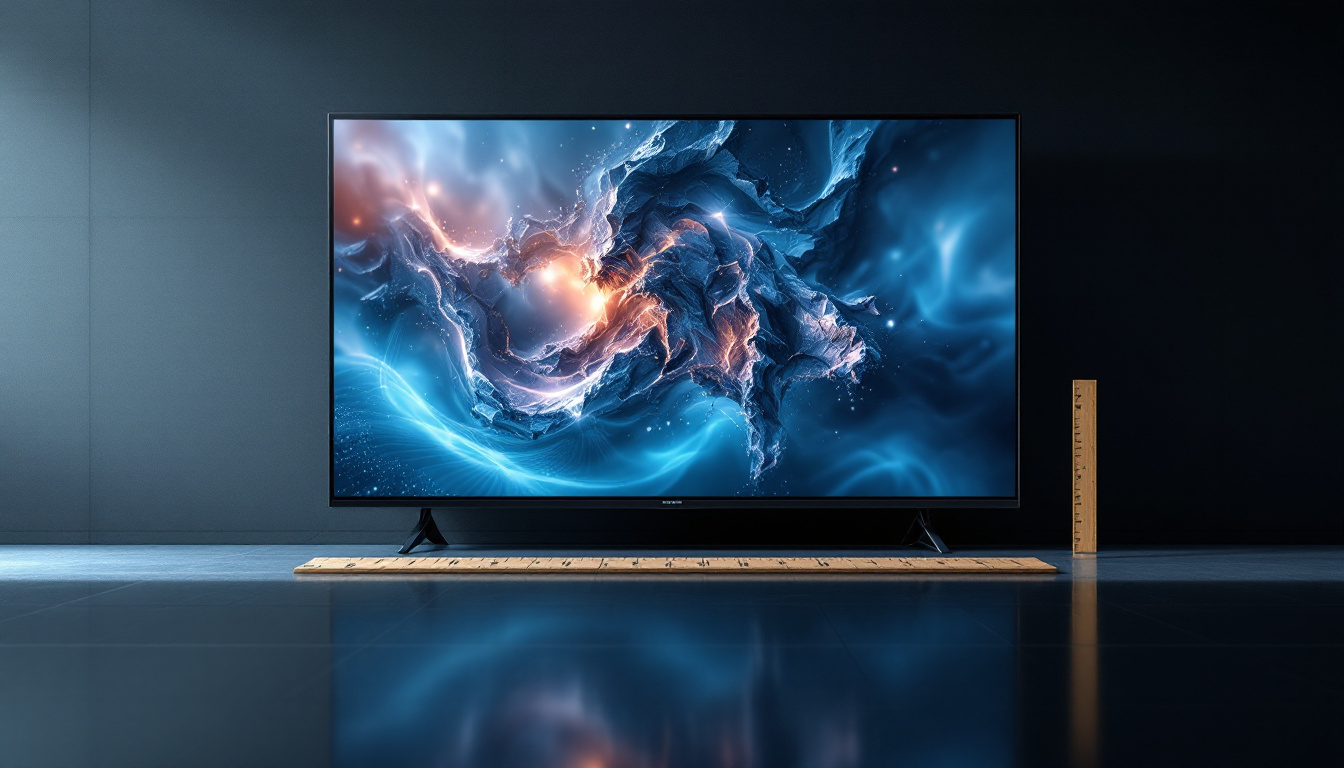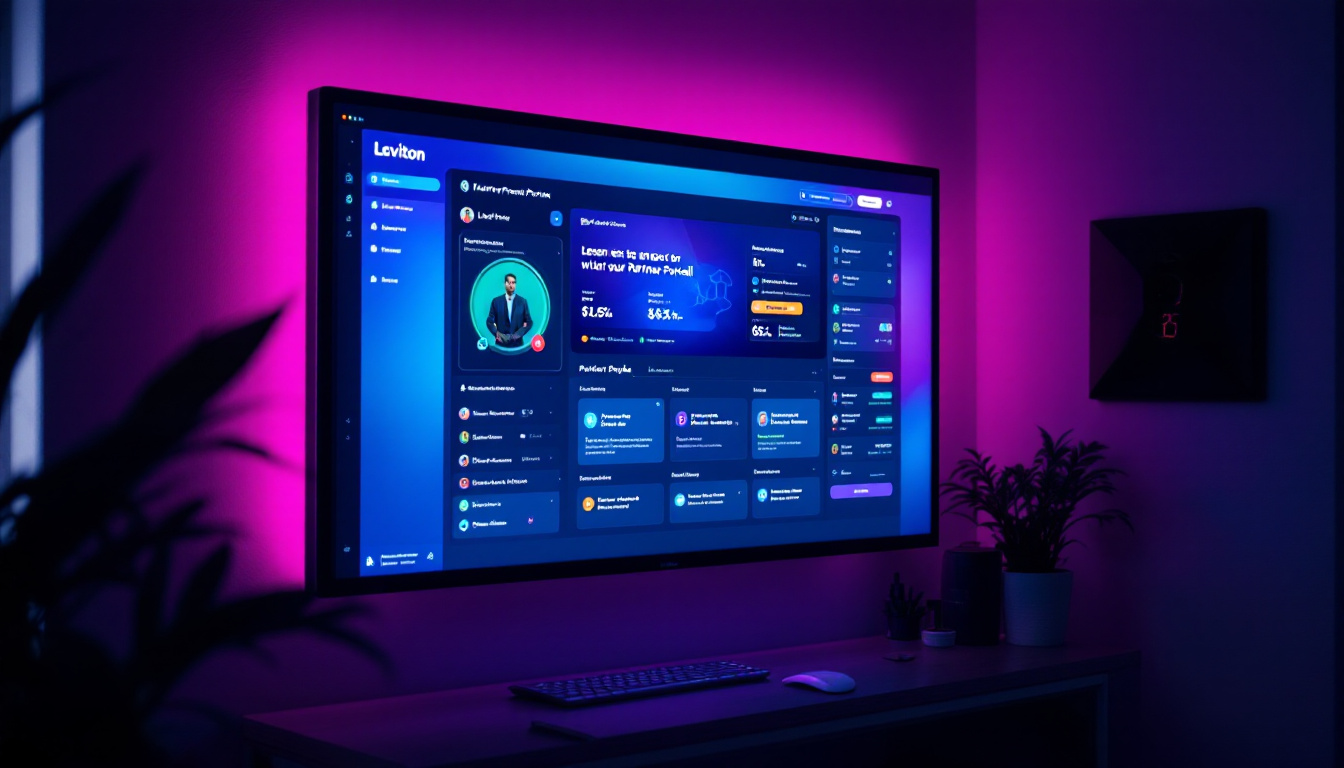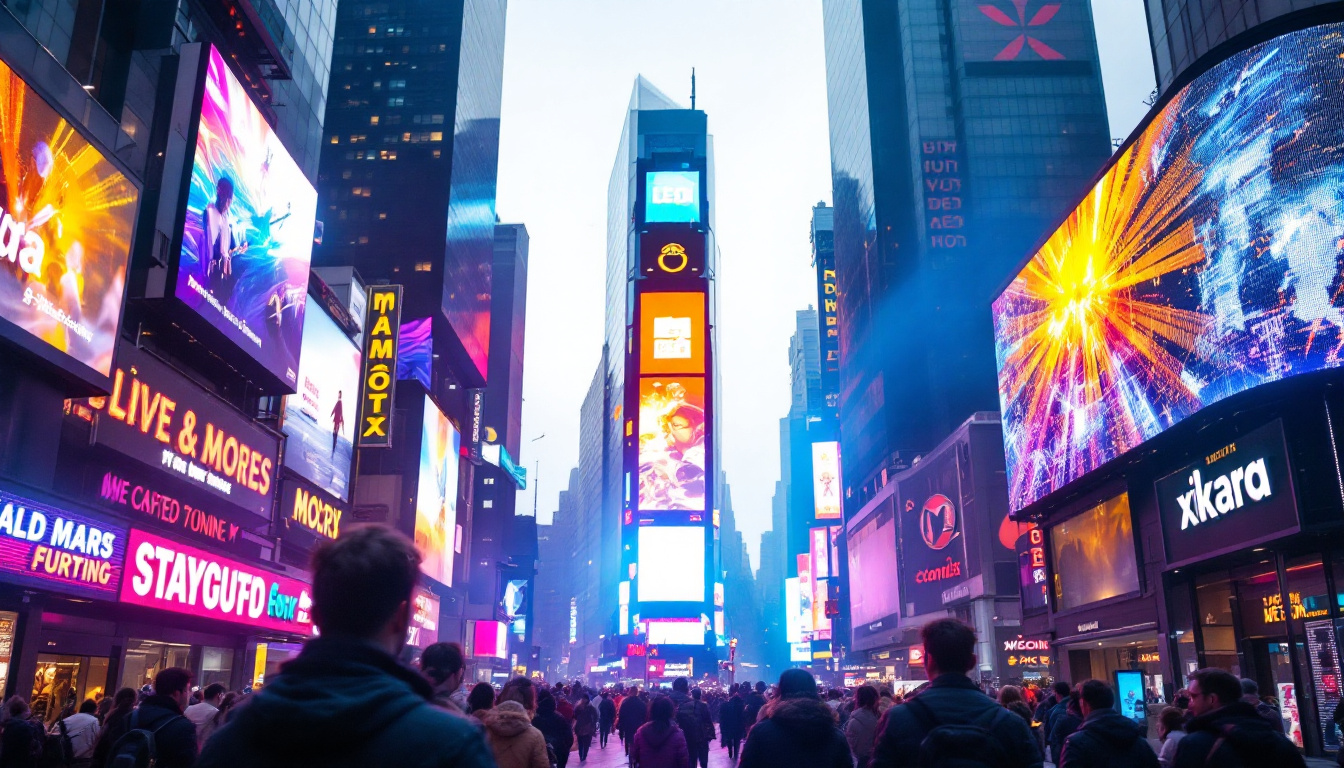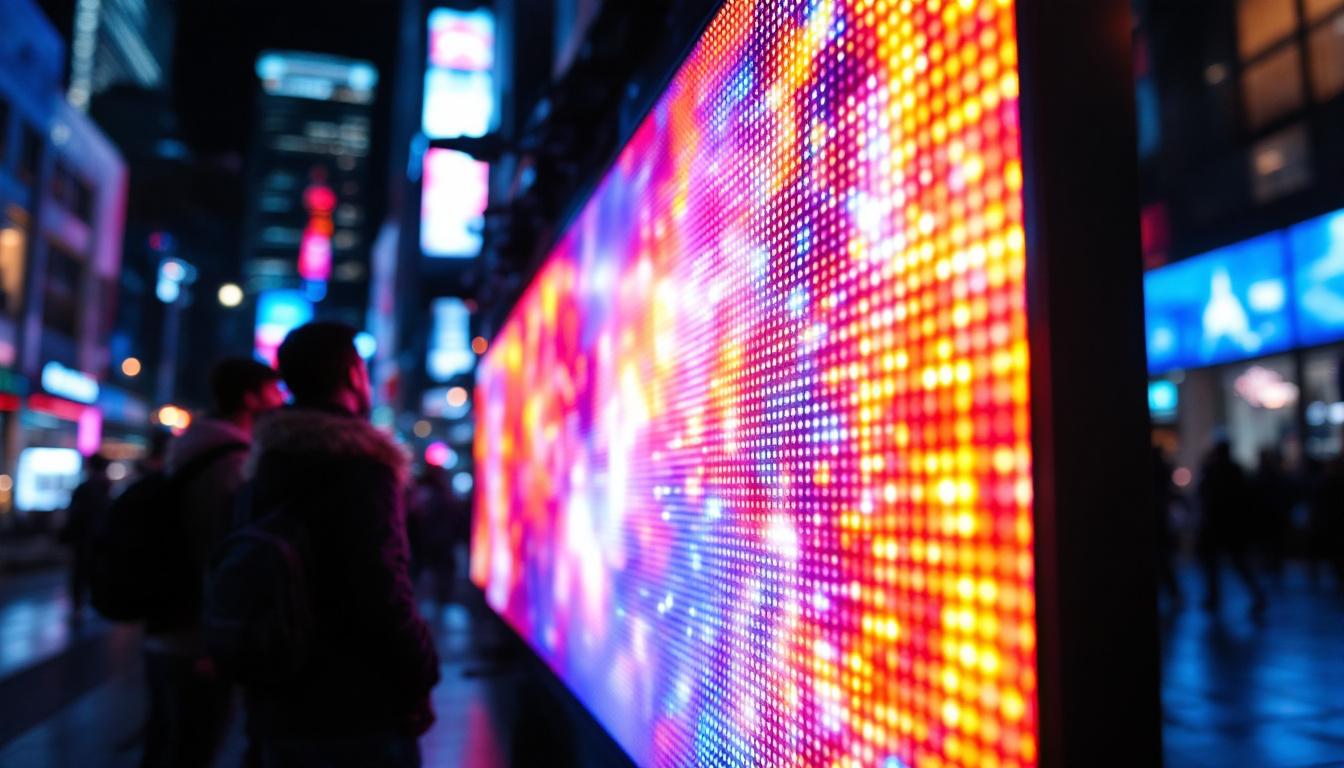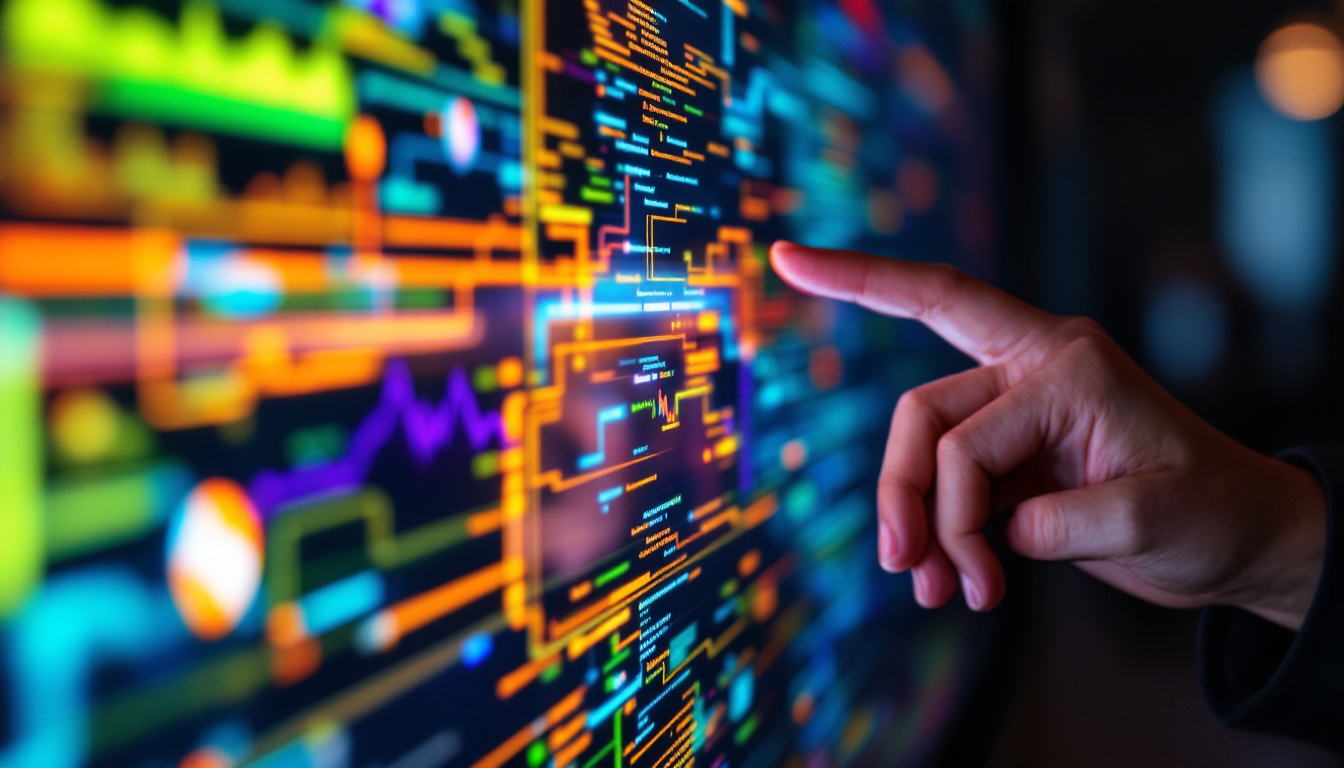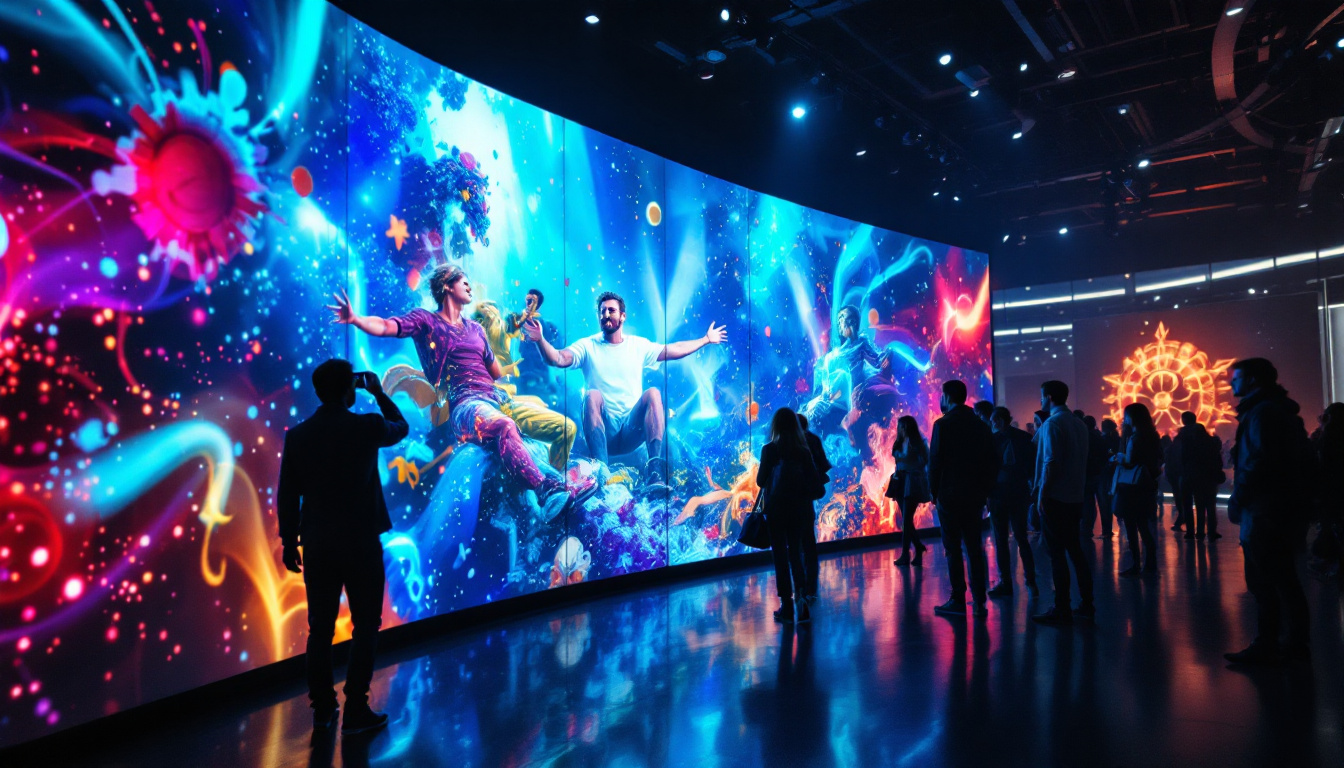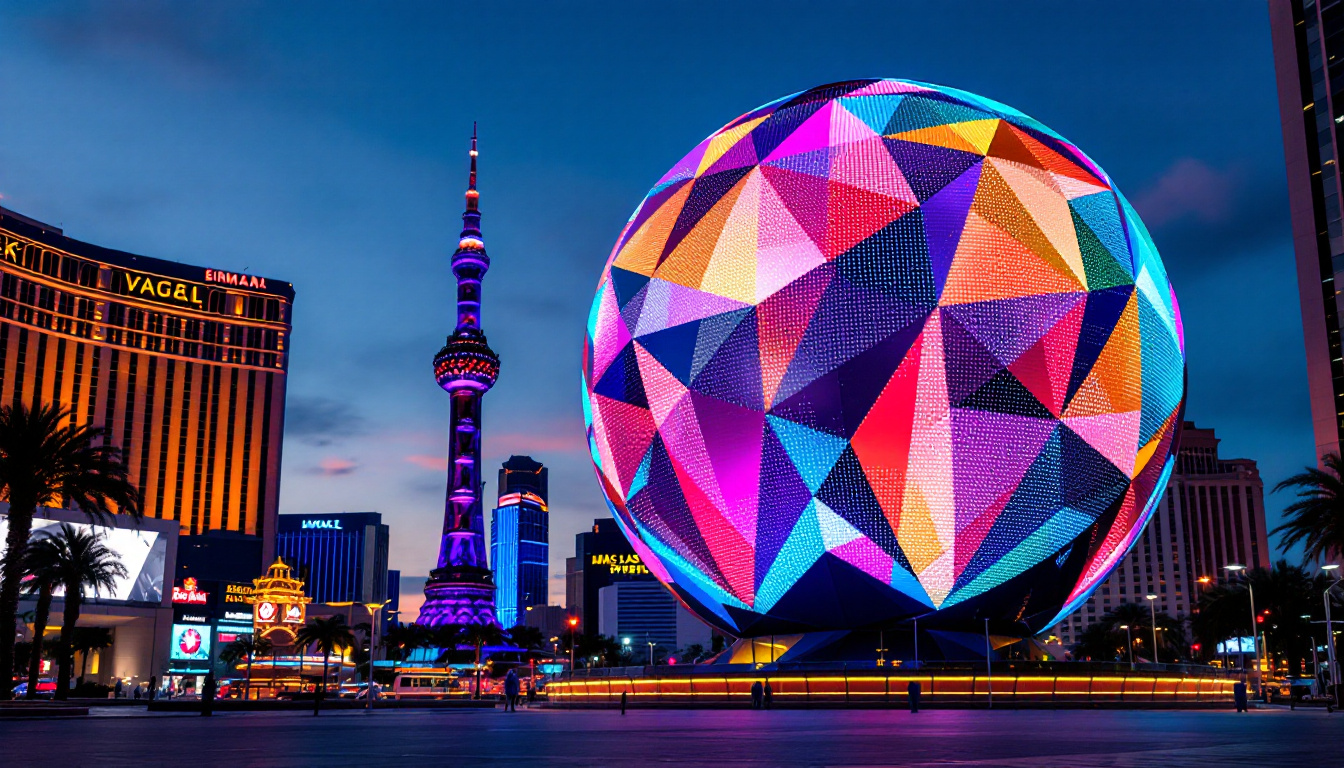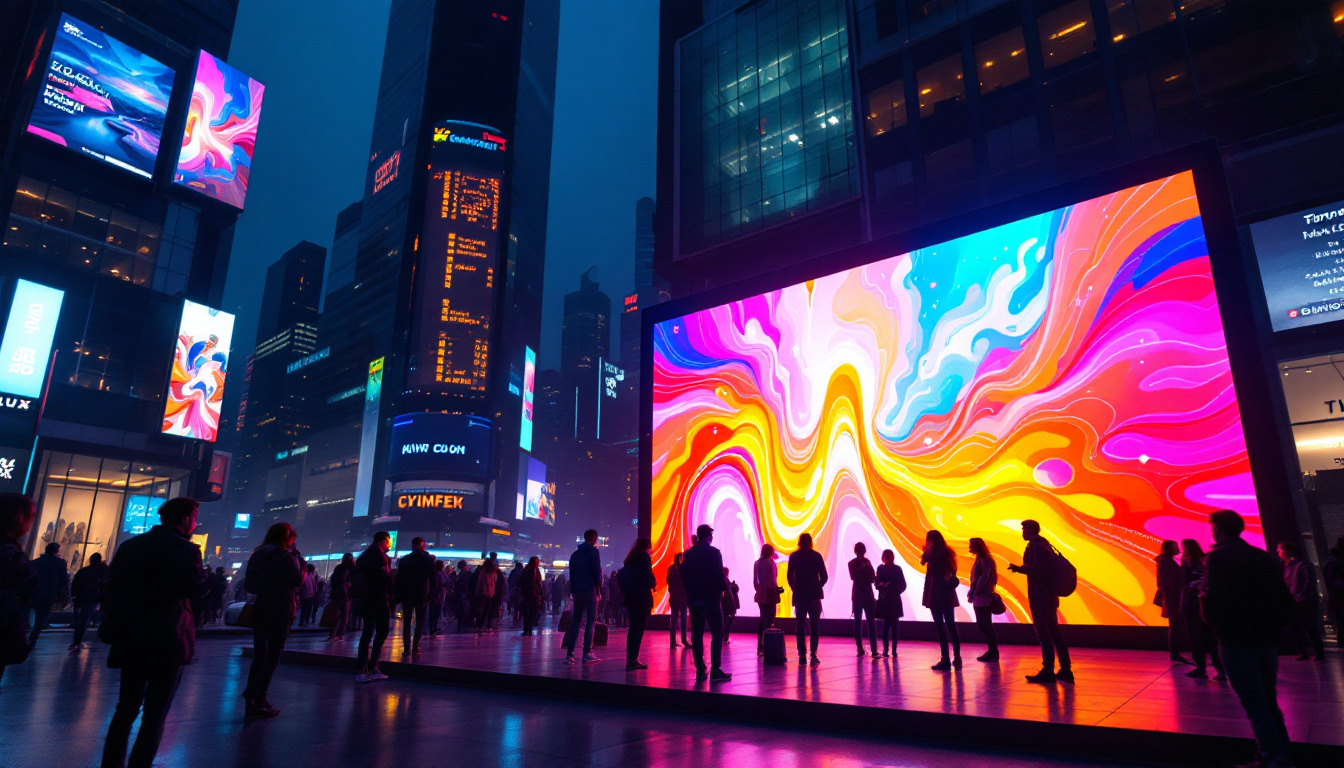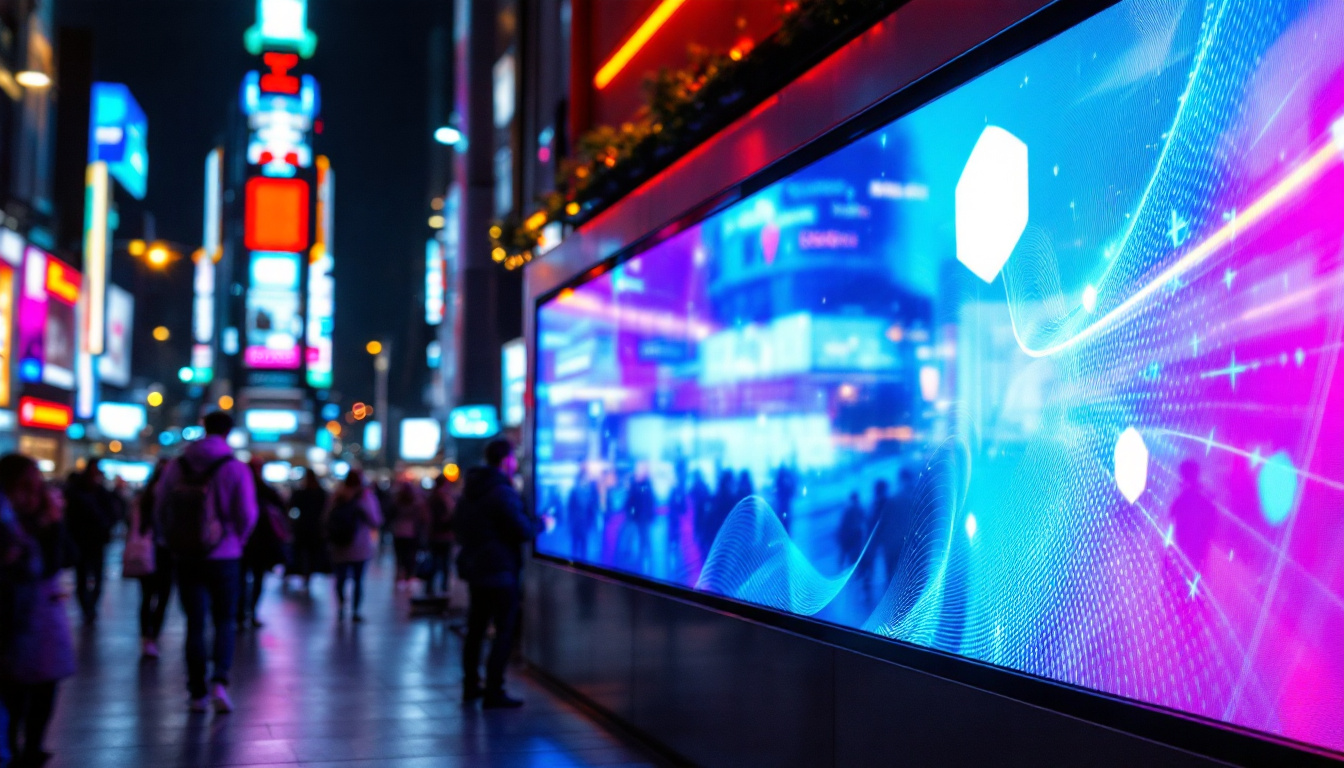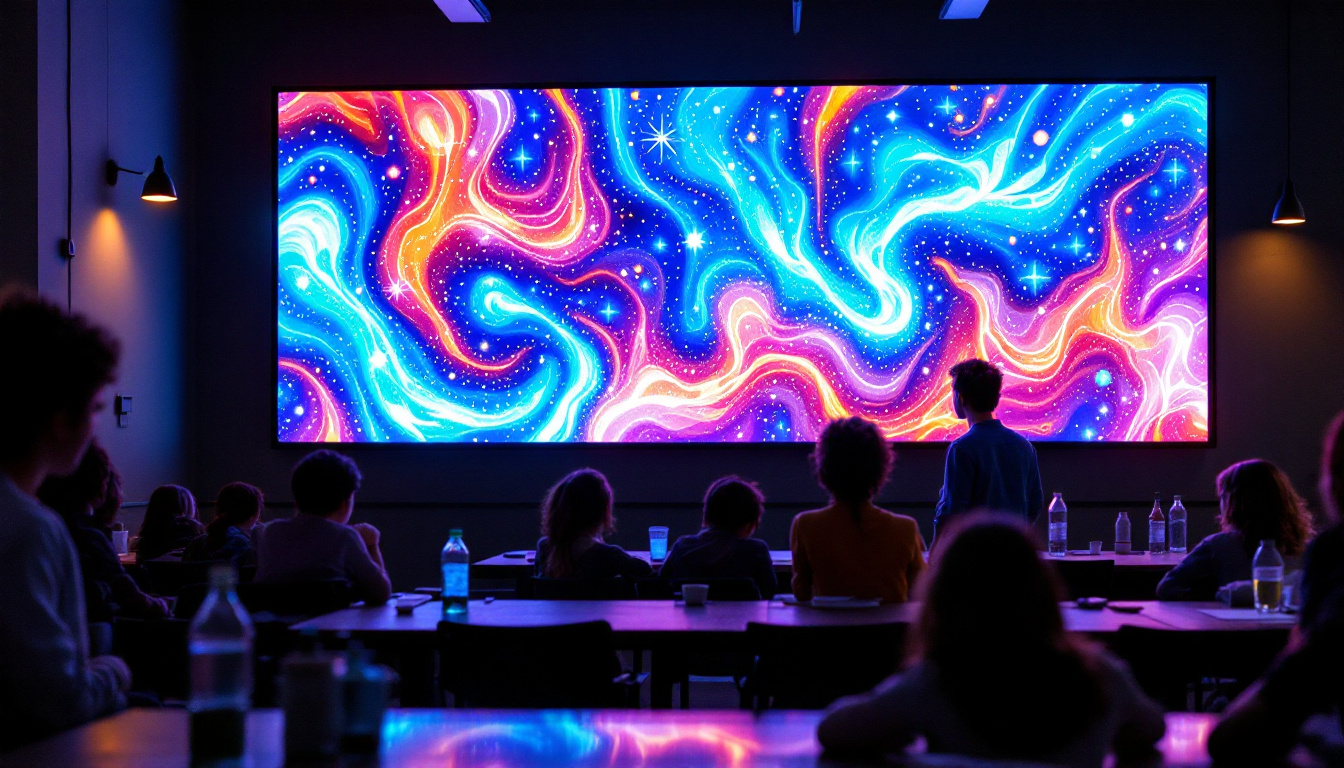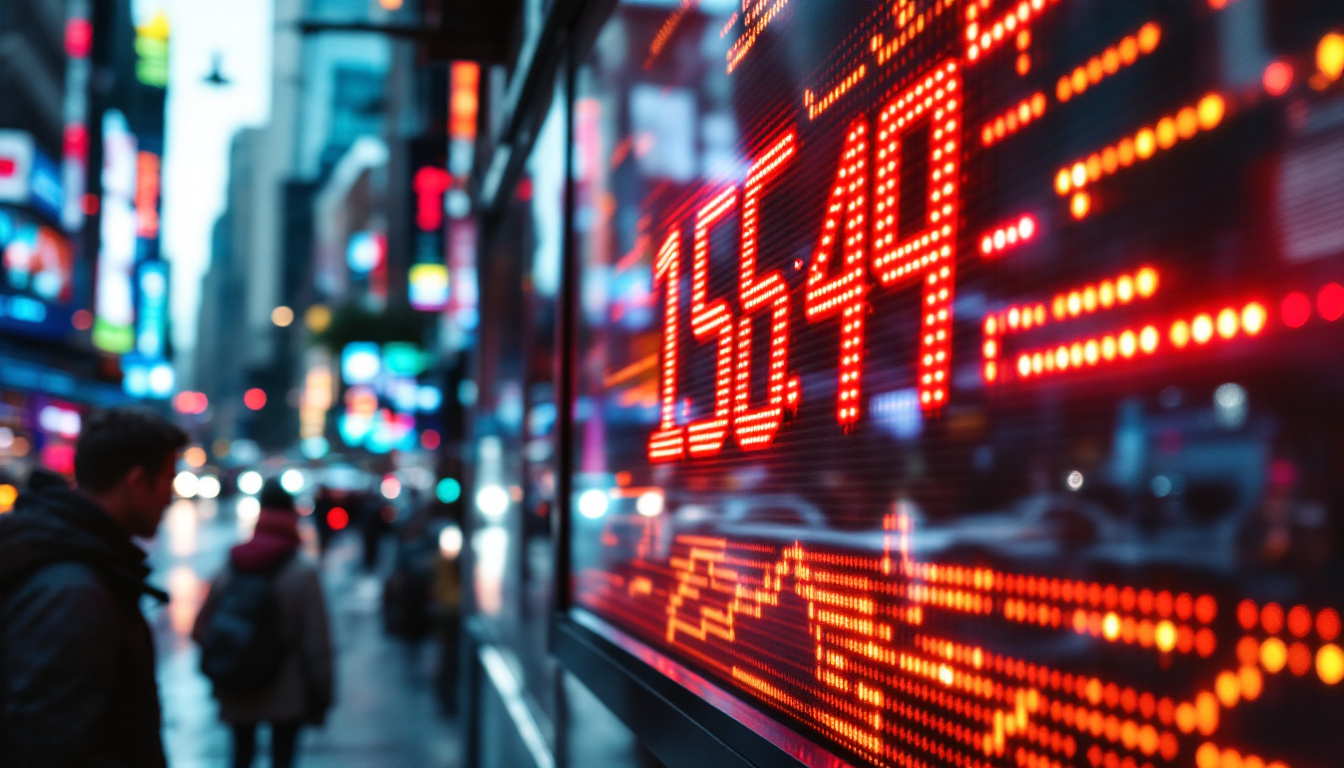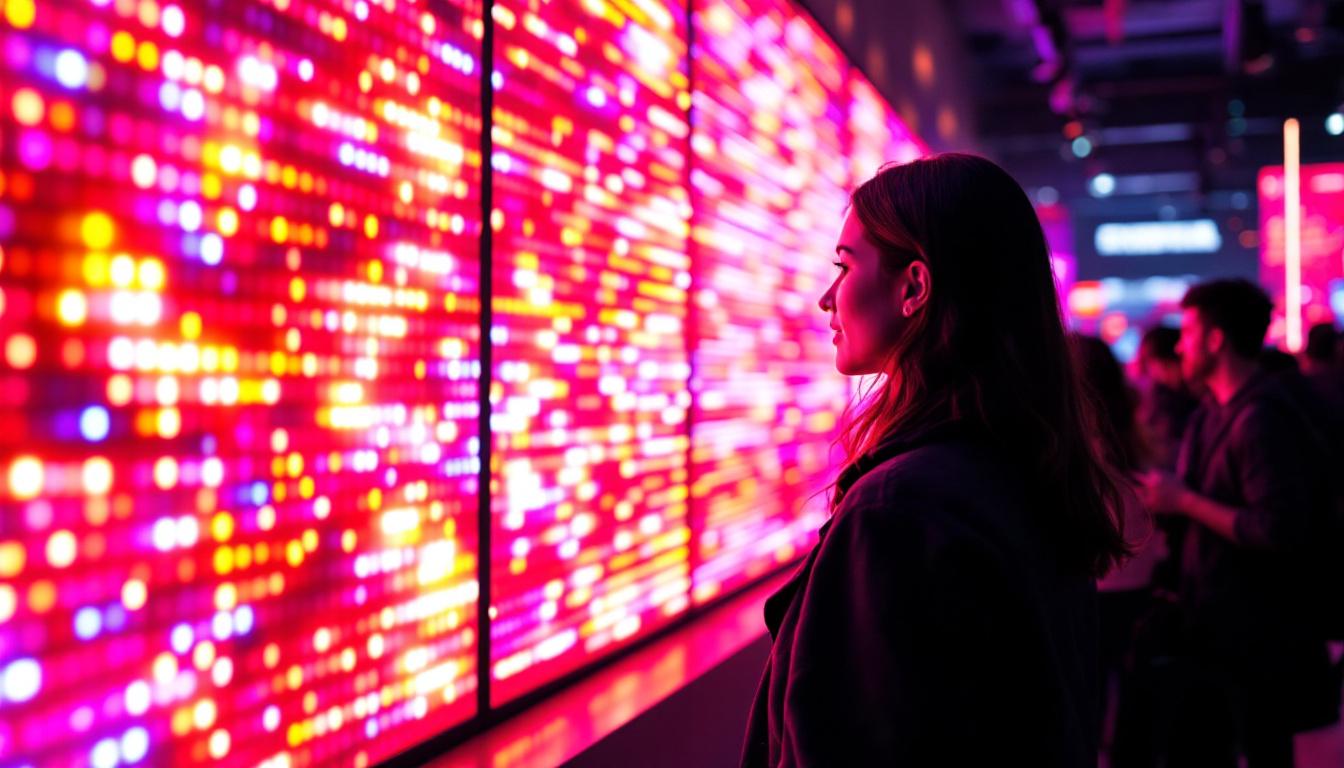In recent years, the display industry has undergone a significant transformation, primarily driven by advancements in technology. Among these innovations, LED (Light Emitting Diode) displays have emerged as a leading choice for various applications, ranging from advertising to entertainment and beyond. This article delves into the intricacies of LED displays, exploring their types, benefits, applications, and future trends.
Understanding LED Technology
LED technology is based on the principle of electroluminescence, where a semiconductor material emits light when an electric current passes through it. This technology has revolutionized the way visual information is presented, offering a more efficient and vibrant alternative to traditional display methods. The compact nature of LEDs also allows for more versatile designs, enabling creative applications in various fields, from advertising to architectural lighting.
The Basics of LED Operation
At its core, an LED display consists of numerous individual LEDs arranged in a matrix. Each LED can emit different colors, and when combined, they create a full spectrum of hues. The intensity and color of the light emitted can be controlled by adjusting the electrical current, allowing for dynamic displays that can change in real-time. This capability has made LEDs particularly popular in environments where visual impact is paramount, such as concerts and large-scale events, where lighting can be synchronized with music for a captivating experience.
LEDs are categorized into two main types: active and passive. Active LEDs have their own driving circuitry, enabling them to produce brighter images and faster refresh rates. Passive LEDs, on the other hand, rely on an external controller, making them less expensive but also less versatile in terms of performance. The choice between active and passive LEDs often depends on the specific requirements of the application, such as the desired brightness, resolution, and budget constraints.
Types of LED Displays
LED displays come in various forms, each tailored to specific applications. Understanding these types is crucial for selecting the right display for a given purpose. The advancements in LED technology have led to the development of displays that not only meet functional needs but also enhance aesthetic appeal, making them a popular choice in modern design.
- Indoor LED Displays: These displays are designed for close viewing and are typically used in venues like shopping malls, conference rooms, and theaters. They offer high resolution and vibrant colors, making them ideal for detailed graphics and videos. The ability to display high-definition content makes them perfect for presentations and advertisements that require clarity and precision.
- Outdoor LED Displays: Built to withstand harsh weather conditions, outdoor LED displays are larger and brighter. They are commonly used for billboards, sports arenas, and public events, where visibility from a distance is essential. These displays often incorporate advanced features such as automatic brightness adjustment, ensuring optimal visibility in varying light conditions, which is crucial for outdoor advertising.
- Transparent LED Displays: These innovative displays allow for visibility through the screen while still presenting images and videos. They are often used in retail environments to create eye-catching advertisements without obstructing the view of the products behind them. This unique feature not only enhances the shopping experience but also allows for creative marketing strategies that blend technology with product display.
Additionally, there are specialized LED displays, such as flexible LED screens, which can be bent and shaped to fit unconventional spaces, and high dynamic range (HDR) displays, which provide superior contrast and color accuracy. As LED technology continues to evolve, the possibilities for innovative applications seem limitless, paving the way for even more engaging and immersive visual experiences.
Benefits of LED Displays
The rise of LED displays can be attributed to several advantages they offer over traditional display technologies, such as LCD or CRT. These benefits make them increasingly popular across various sectors.
Energy Efficiency
One of the most significant advantages of LED displays is their energy efficiency. Compared to traditional lighting methods, LEDs consume significantly less power, resulting in lower electricity bills and a reduced carbon footprint. This efficiency is particularly beneficial for large-scale installations where energy costs can accumulate quickly.
Longevity and Durability
LED displays are known for their impressive lifespan, often lasting up to 100,000 hours or more. This longevity translates to less frequent replacements and lower maintenance costs. Additionally, LEDs are more robust than traditional bulbs, making them less susceptible to damage from shocks or vibrations.
High Brightness and Contrast
LED displays provide exceptional brightness levels, ensuring clear visibility even in direct sunlight. This high brightness is complemented by excellent contrast ratios, allowing for vivid colors and sharp images. As a result, LED displays are ideal for outdoor advertising and other applications where visibility is critical.
Applications of LED Displays
The versatility of LED displays has led to their adoption in a wide range of applications. From advertising to entertainment, their impact is felt across numerous industries.
Advertising and Marketing
In the realm of advertising, LED displays have become a powerful tool for marketers. Their ability to display dynamic content allows businesses to engage audiences effectively. digital billboards, for example, can showcase multiple advertisements throughout the day, maximizing exposure and reach.
Furthermore, the vibrant colors and high resolution of LED displays attract attention, making them more effective than static signage. Brands can also utilize real-time data to update their advertisements based on audience demographics or current events, enhancing their marketing strategies.
Entertainment and Events
In the entertainment industry, LED displays play a crucial role in enhancing the audience experience. Concerts, festivals, and sporting events often feature large LED screens that display live feeds, graphics, and animations, creating an immersive atmosphere.
Moreover, LED technology has enabled the creation of stunning visual effects in theaters and theme parks. With the ability to produce vibrant colors and intricate designs, LED displays are integral to modern stage productions and attractions.
Transportation and Public Information
LED displays are widely used in transportation systems for displaying information such as arrival times, schedules, and directions. Train stations, airports, and bus terminals utilize LED screens to provide real-time updates, improving the overall passenger experience.
Additionally, LED displays are employed for public information purposes, such as emergency alerts and community announcements. Their visibility and adaptability make them ideal for conveying important messages in a timely manner.
Future Trends in LED Display Technology
The LED display industry is continuously evolving, driven by technological advancements and changing consumer demands. Several trends are shaping the future of this dynamic field.
Integration with Smart Technology
As smart technology becomes increasingly prevalent, the integration of LED displays with IoT (Internet of Things) devices is expected to rise. This integration will enable displays to communicate with other devices, allowing for more personalized and interactive experiences. For example, smart billboards could adjust their content based on real-time traffic data or weather conditions.
Advancements in Resolution and Pixel Density
With the demand for higher resolution displays on the rise, manufacturers are continually working to improve pixel density. This trend is evident in the development of microLED and miniLED technologies, which offer enhanced image quality and greater detail. As these technologies mature, they will likely set new standards for visual clarity in various applications.
Sustainability Initiatives
As environmental concerns become more pressing, the display industry is focusing on sustainability. Manufacturers are exploring eco-friendly materials and production processes, as well as recycling programs for old displays. The push for sustainable practices will not only benefit the planet but also appeal to environmentally conscious consumers.
Challenges Facing the LED Display Industry
Despite the numerous advantages and applications of LED displays, the industry is not without its challenges. Addressing these issues will be crucial for continued growth and innovation.
Cost Considerations
While the prices of LED displays have decreased over the years, initial investment costs can still be a barrier for some businesses. High-quality LED displays, especially those designed for outdoor use, can require significant upfront capital. Finding cost-effective solutions without compromising quality remains a challenge for manufacturers and consumers alike.
Technological Obsolescence
The rapid pace of technological advancement poses a risk of obsolescence for existing LED displays. As new technologies emerge, older models may become outdated, leading to concerns about return on investment. Companies must stay informed about industry trends and be prepared to adapt to remain competitive.
Environmental Impact of Production
While LED displays are energy-efficient during their operational life, the production process can have environmental implications. The extraction of raw materials and the manufacturing processes can contribute to pollution and waste. Addressing these concerns through sustainable practices will be essential for the industry’s long-term viability.
Conclusion
LED displays have undoubtedly transformed the display industry, offering numerous advantages that cater to a wide range of applications. Their energy efficiency, longevity, and vibrant visual capabilities make them an attractive choice for businesses and organizations looking to enhance their communication strategies.
As technology continues to evolve, the future of LED displays looks promising, with innovations in smart technology integration, resolution advancements, and sustainability initiatives on the horizon. However, challenges such as cost considerations and environmental impacts must be addressed to ensure the continued growth of this dynamic industry.
In summary, LED displays are more than just a technological advancement; they represent a shift in how information is conveyed and experienced. As the display industry continues to innovate, the potential for LED technology remains limitless, paving the way for a brighter and more engaging future.
Explore Cutting-Edge LED Display Solutions with LumenMatrix
As you consider the transformative impact of LED displays on the industry, take the next step with LumenMatrix. Our commitment to innovation positions us at the forefront of LED display technology, offering a diverse range of products from Indoor LED Wall Displays to Custom and Transparent LED solutions. Whether you’re looking to elevate your brand’s visibility or create immersive visual experiences, LumenMatrix is here to revolutionize your visual communication. Check out LumenMatrix LED Display Solutions and empower your business to shine brighter.

